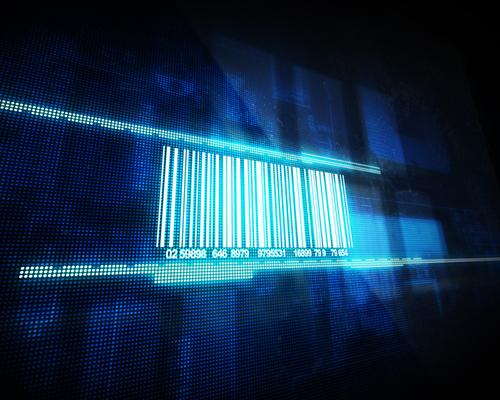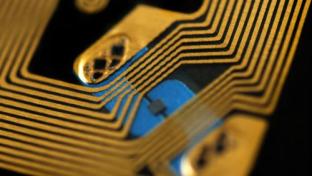4 Reasons Retailers Are Ditching Barcodes
Although the idea of a barcode system originated in 1932, the first barcode scanner identified a pack of Wrigley’s chewing gum at an Ohio supermarket in 1974. Since then, optimal markings that embed information for machines and cameras to recognize — i.e., barcodes — have remained the asset identification method of choice for retailers worldwide.
Typically used to identify commodities, barcode technology can also be used today for asset tracking. For example, a cash register has a physical address. Anytime an item is scanned, users can see exactly where that product was at a certain point in time.
However, that’s where barcode asset tracking capabilities end. And, where barcodes fall short, other technologies like RFID, image recognition and Amazon’s Just Walk Out, a combination of computer vision, sensor fusion and deep learning technologies that allows shoppers to walk out of a store with their goods without waiting in lines, going to a cashier or interacting with store employees, are picking up the slack.
As retailers strive to remain at the forefront of innovation, leading retail organizations are kicking barcodes to the curb for the following four reasons.
1. Human Error
In retailing, barcodes leave a lot of room for human error. There’s the all-too-common case of the damaged barcode at the grocery store. This can be incredibly frustrating for the busy father at the checkout counter and the tired grocery worker alike. The clerk might have to key in a PLU number manually, introducing the opportunity to enter the wrong code, tap or weigh something incorrectly or add the incorrect quantity.
Even worse, what if the clerk memorizes the wrong code and accidentally rings up the customer for expensive cherries rather than cheap bananas? What if the customer decides not to purchase an item and leaves it at the cash register? Outside the grocery store, what if an item falls off a pallet in the warehouse and no one notices it?
[See also: Retaining the New Consumer Through the Power of Technology]
While these may seem like minor errors, they happen all too often. And not only do they reveal insufficiencies within the barcode system, they can become quite costly and can effectively poison the entire shopping experience for the consumer.
2. Limitations of Image Recognition Technology
Traditional barcodes have two basic levels: 1D barcodes, which hold up to 84 characters, and 2D barcodes that hold up to 7,000 characters. QR codes, which exploded in popularity during the COVID-19 pandemic, are likely the most well-known use case for 2D technology, but even they have their limitations.
Instead, state-of-the-art retailers are now favoring image recognition technology. This means when the same busy father in the checkout line tries to buy a pack of Oreos with a damaged (or non-existent) barcode, instead, the clerk can leverage a scanner with image recognition technology. In this case, the system recognizes the traditional blue and white Oreo lettering, and it rings it up while the scanner updates the system with the amount of Oreo packages in the store.
Although this asset identification strategy sounds a bit futuristic, image recognition is already a reality and has strong potential to replace traditional barcodes for good. Further, image recognition technology has unlocked troves of opportunities with image barcodes — imperceptible barcodes embedded on the surface of packages that empower store clerks to scan items faster without looking for the traditional barcode.
3. Newer, Better Technology
Just Walk Out, an innovation born from Amazon Go stores, is also pioneering the end of barcodes as we know it. Aside from the credit card, QR code on a cellphone app that a customer uses to enter the store, there are no barcodes on any products.
A mix of several technologies, a Just Walk Out-enabled store knows when a specific item has been picked up or returned to the shelf. Then, with the power of facial recognition and RFID readers, the system identifies which customer picked up that item, places that product into a virtual shopping cart and charges the customer upon departure.
[See also: Evolution of How Consumers Shop]
Sometimes the ability to “just walk out” can make a huge difference for customers – like those trying to grab a bottle of water right before a long plane ride. This groundbreaking technology allows retailers to eliminate one of the biggest pain points for consumers – waiting in long checkout lines. Once implemented, retailers can provide a highly differentiated consumer shopping experience and win more business. Traditional barcodes don’t get them there — nor does image recognition alone.
4. RFID Technology
When it comes to cheap retail items, image recognition and Just Walk Out technology can mitigate human errors. However, as the value of a product increases, simply identifying an asset becomes insufficient and the need for precisely locating assets becomes imperative. This is where RFID technology can step in to create added value with streamlined inventory and restocking and enhanced insight into consumer behavior with products.
Traditionally, a retailer would have to walk around a store or warehouse scanning items and entering them into a spreadsheet. Today, most organizations benefit from using asset management software to identify and track assets. These centralized systems can take the information from an RFID tag and limit human error while improving data quality.
When it comes to inventory, knowing where goods are in real-time helps drive greater operational efficiency and reduce costs. For example, labor scheduling for back of the house delivery acceptance and storage can be better managed with real-time arrival information.
Additionally, empty shelves translate into lost revenue. In this case, real-time, shelf-level inventory information can be utilized to ensure consumers always have a product within arm’s reach and can streamline restocking operations.
Understanding consumer engagement with products – what was picked up and tried on, for example – can offer marketers greater insight into what works and what doesn’t. Such benefits are unavailable with barcodes, but the possibilities are endless with active location and sensing technologies.
Barcodes served a useful purpose in retail for nearly 50 years. Still, revolutionary technologies like image recognition, RFID and Just Walk Out have evolved to reduce inefficiencies and create new opportunities that barcodes never could, especially for asset tracking use cases.
As retailers continue to pursue digital transformation to gain a competitive edge, soon barcodes will fade into obsolescence, and more cutting-edge strategies will take their place.
Bob Proctor is CEO of Link Labs.





